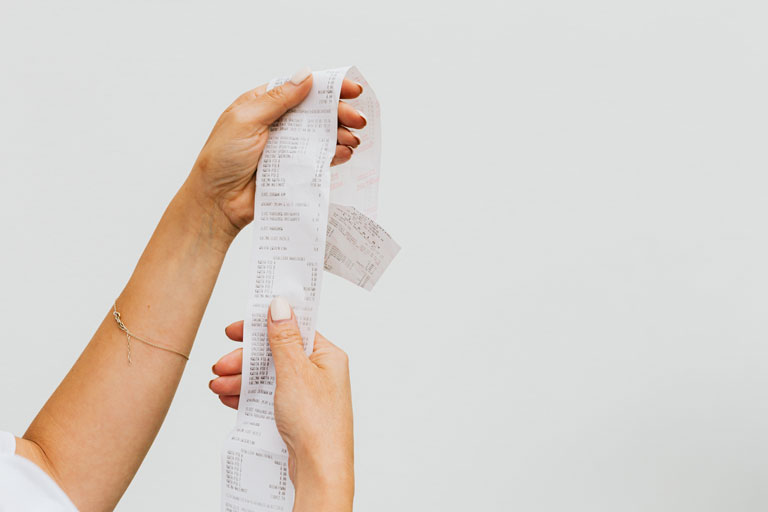Payment reversals are the last thing a business owner wants to see on their end-of-month reports. Making a sale and seeing those numbers go up can be a huge victory for anyone who owns a business. But the problem is, sometimes those sales just don’t stick. Causing those shiny projected revenue goals to become harder to obtain.
What does reversing a payment mean? There are many reasons for a payment reversal. And there are a few different types of reversals that merchants have to deal with. Depending on the reason and the type, it can affect a merchant in different ways.
This article is a deep dive into the world of transaction reversals. What they are, why they happen, how they affect merchants, and how merchants can prevent them.
Who Initiates a Payment Reversal?
Any player in the transaction can initiate a reversal. Including the cardholder, the issuing bank, the card network, the merchant, or their acquiring bank.
What Does a Payment Reversal Mean For Credit Cards?
So what is a reversal transaction? And what does reversal credit mean? In its simplest form, a payment reversal is a blanket term for a refund or reversal of funds back to the customer’s bank
Crediting them for a transaction that they no longer agree with. A transaction reversal can happen for credit card transactions, debit card transactions, and even ACH (Automated Clearing House) transactions.
Payment reversals can occur for a variety of reasons. We will discuss these further down in the article for a clear understanding. But first, let’s further dissect what payment reversals are.
What Are the Types of Payment Reversals?
The term payment reversal typically refers to any situation where a customer receives funds credited back that had not yet settled to the merchant’s account. As opposed to a chargeback, retrieval, or refund, those funds have been settled to the merchant. So the merchant would receive a debit to return the funds to the cardholder.
In some cases, the term payment reversal is used interchangeably between the typical authorization reversal (funds not settled) and chargeback, retrieval, and refund situations.
To best understand how to minimize any type of repayment to a customer, it is best to familiarize yourself with the different types of payment reversals.
Authorization Reversals
An authorization reversal is standard when discussing a payment reversal. It occurs when a cardholder contacts their issuing bank, such as Wells Fargo, right away to cancel a transaction. So Wells Fargo reverses the charge prior to the funds settling to the merchant.
The transaction would have received approval at the terminal level. This means the authorization has gone through and the funds are on hold. However, the funds had not yet hit the merchant account.
This type of limbo for the transfer of funds can happen with a credit card and ACH transactions. This is because the money is not debited from the payer’s account instantly, the way it is with debit. Debit is like digital cash, the minute the transaction goes through, the customer receives a debit.
Conversely, payment reversal on credit card networks and the ACH network is a more lengthy process. Approvals and bank-to-bank communication make for more steps before the customer receives the debit and the merchant receives the credit.
Because of this, merchants are not debited from their accounts when an authorization reversal occurs. Instead, they simply are not funded for that transaction amount. In these situations, merchants should look over their batch reports for the details. Because their numbers may not add up, concerning transactions completed and the settlement totals.

Chargebacks
Another type of payment reversal that a merchant will experience would be a chargeback. A cardholder’s issuing bank initiates this when they file a dispute for their charges.
Charge disputes can be for a plethora of reasons, including:
- The cardholder is claiming the transaction was fraudulent
- The cardholder was charged the wrong amount
- The cardholder does not recognize the merchant on their statement
- The cardholder tried returning the item with no luck
- The cardholder was unsatisfied with the service or product
- The cardholder never received the service or product
- The cardholder paid by other means
- Etc.
When a cardholder files a dispute to their issuer, the bank will open an investigation on the transaction. The merchant receives a notification and is forcibly debited for the transaction amount.
Though the transaction is reversed at the time of the chargeback initiation, it may not be the final result. Merchants have an opportunity to fight the chargeback and prove the legitimacy of the card transaction. They would do so by submitting transaction receipts and letters to the bank.
If the cardholder’s bank finds the cardholder’s claim to be valid, they will keep the funds. If the merchant is able to appropriately dispute the credit reversal, they will be re-credited the transaction amount.
Unfortunately, even if a merchant can prove the legitimacy of the transaction, they are still charged a fee every time one of their customers files for a chargeback. This fee is typically around $15 every time. It pays for the facilitation of the chargeback process between the acquiring bank, issuing bank, card networks, and payment processor.
Retrievals
Next, a retrieval is similar to a chargeback in that a customer may not recognize a transaction. Or the issuing bank may want more information on a suspicious charge. When this occurs, the cardholder’s acquiring bank issues a retrieval request to the merchant. The merchant must provide further details on the transaction.
Unfortunately, if the merchant fails to respond to the request with the appropriate information, or if the information provided is not recognized by the cardholder, a chargeback will ensue.
Merchants typically have between 10 to 20 days to respond to retrieval requests. But either way, they will most likely be charged a fee every time their cardholder’s bank initiates a retrieval request. If the request turns into a chargeback, the merchant will again, receive further fees.

Refunds
Lastly, refunds differ from both chargebacks and authorization reversals. Refunds are merchant initiated. They side with the customer and believe it is best to credit them. With refunds, the customer completes a purchase, then for any number of reasons, contacts the merchant or returns to the store, and requests a refund.
Rather than a reversal of the original transaction, there is a new transaction that takes place (for the same amount). But as a debit to the merchant, rather than a credit.
A customer can request a customer for any reason:
- They didn’t like the product
- They got the wrong size
- It was a gift and the receiver didn’t want it
- There was something wrong with the product
- The product or service was never received
- The customer decided they did not have sufficient funds in their budget
- etc…
Luckily for merchants, there is no fee when a customer requests a refund. But the merchant will still have to pay their regular interchange and merchant processing fees. Regardless if a transaction is refunded or not. Additionally, since the refund is a new separate transaction, they will pay additional interchange fees.
Why Do Payment Reversals Occur?
There are numerous reasons why a payment reversal may happen. Below are some of the most common reasons:
Incorrect Account Numbers
For ACH or card-not-present transactions, it is entirely possible to enter the wrong account number.
This could simply be due to human error such as a typo, or misreading or mishearing of the number. Or it could potentially be purposely fraudulent. Meaning the clerk or customer is using the wrong information for malicious purposes.
This is why card-not-present (keyed) transactions run merchants’ higher interchange fees. When keying in card information, there is the potential for a higher risk involved. And a number one reason for chargebacks. Card-not-present transactions have a difficult case when attempting to prove legitimacy to issuing banks.
If you do have to process manual payments, make sure to always double-check that the card or account number is correctly entered before submission.
The Issuing Bank Believes the Transaction is Obscure
If a cardholder’s issuing bank sees a transaction come through that is concerning, they may automatically reserve the transaction. Concerning transactions could be obscure or inconsistent with the usual account activity. Or the bank may notice the particular merchant is high on their chargeback ratio and the transaction seems risky or fraudulent.
The Customer Disputed the Transaction with Their Issuing Bank
Reversals in the form of retrievals and chargebacks occur when a cardholder raises a dispute with their bank. The dispute can happen when a cardholder does not recognize the charge, remember the charge, agree with the charge, or the goods or services were not received or received differently than described. Which could also include damages or incomplete.

Unauthorized or Fraudulent Transactions
If a cardholder believes a transaction was fraudulent they can inform their bank. From here, a bank can either request further information from the merchant (retrieval) or issue a chargeback. Which is where the customer would receive the card’s reversal of credit.
Banks themselves can also issue a bank chargeback or automatic funding reversal. This would occur if they believe there is suspicious or inconsistent activity occurring within the account.
Merchants can reduce the risk of fraudulent credit card transactions by verifying the customer’s identity. To verify the identity, you can ask for the cardholder’s driver’s license, passport, or any other form of identity. From there you can compare the credit card to the ID to match the name and signature. Additionally, you would of course want to make sure the person handing the ID to you looks like the photo on the ID and matches the description.
The Customer Did Not Want to Pay For a Recurring Charge
Offering recurring subscription-based services can be tricky. Oftentimes customers are persuaded to sign up for a subscription. However, they have the intention of canceling after the first purchase. If they did cancel or think they canceled, or even can’t figure out how to cancel, you may face extensive charge reversals from the customer’s issuing bank.
To minimize the risk of payment reversals, always be sure to clearly communicate the terms of your recurring services. Additionally, making refunds easier will eliminate chargebacks, which are more costly than refunds.
Moreover, make sure you are delivering the exact product as described. It will increase customer satisfaction. Meeting their expectations and reducing payment reversal requests.

How Should a Merchant Handle Payment Reversals?
Handling charge reversals are done differently given the type of reversal situation. If the merchant is facing an authorization reversal, there really isn’t anything they can do if they disagree with it, other than contacting their customer and asking for clarification.
Next, if the merchant faces a retrieval or chargeback, they must respond with all the requested documentation–proving the legitimacy of the transaction. In hopes of retrieving their funds. However, if the merchant agrees that the transaction should be reversed, they would simply comply and let the chargeback play out.
Lastly, if a merchant is dealing with a customer requesting a refund, it is best to have an amicable refund process. It is not worth arguing with a customer as to why they are refunding their item. Businesses that have easy return policies have the most loyal customer base. Make sure your return policy is clear but also easy for consumers.
How Can a Merchant Minimize the Risk of a Payment Reversal?
Though some payment reversals, like returns, may not be 100% unavoidable, there are ways to minimize unnecessary instances. Reducing the risk of payment reversal applies similarly to all types of reversals.
Reduce the Opportunity For Fraud
Implementing fraud prevention tactics can help reduce unnecessary customer payment reversals. Such implementations would verify that the cardholder is the authorized user. Merchants should consider the following fraud reduction tactics:
- Using address verification systems (AVS) and Security code verification at checkout.
- Be sure the shipping address matches the card billing address.
- Analyzing large or expensive orders to be sure they do not look out of the ordinary.
Being vigilant to look for cards that are making multiple purchase orders or refunds.
Clear Communication With Customers
When a customer is discontent with their product, the delivery, or the charge to their account, they may request a payment reversal.
Solidifying product actuality with customer expectations will be sure to reinforce customer confidence.
Limiting unexpected outcomes will reduce payment reversals. A merchant could include the following as part of a clear communication strategy:
- Itemizing each fee at checkout
- Emailing the order confirmation with details of the fees, items, and expected delivery date (if applicable).
- Sending advance reminder alerts to customers when payments are to be taken out.
- Be sure your merchant billing descriptors are accurate and match what the customer sees at checkout or your location.
- Utilize tracking numbers for shipped products.
- Have a clear and simple return policy and product warranty – to reduce chargebacks.
What Consequences Do Merchants Face From Payment Reversals?
The first consequence a merchant faces with payment reversals is fees. Chargebacks, retrievals, and sometimes even authorization reversals have penalty fees for the merchant. Each costs an average of $15.
On top of reversal fees, merchants lose out on the cost to run the transaction. This means the merchant pays the credit card processing fees and the interchange rates no matter what.
There is no getting those payments back. If reversals happen often, these fees can add up. Significantly impacting business revenue.
Furthermore, a merchant that acquires a significant amount of chargebacks will be categorized as risky. They may lose their merchant account and relationship with their payment processor. Moreover, they will lose customer trust. Further plummeting sales.
Lastly, merchants may be subject to additional transaction regulations– depending on their payment processor. A payment processor may require merchants to pre-authorize every transaction. Or merchants may be required to only send orders to billing addresses, nothing that doesn’t match the payment card address.

What is the Timeframe for a Payment Reversal?
Generally speaking, most customers receive their funds back in their accounts after a few business days. However, if a chargeback has been issued, and the merchant is fighting it, the process will take longer.
How Many Payment Reversals Should a Merchant Have?
Merchants should have as few payment reversals as possible, especially when it comes to chargebacks. Card brands and payment processors look for chargeback ratios to be under 1%. Anything higher can lead to potential consequences such as fines or loss of processor relationships.
As long as you are under 1%, you should be just fine in the eyes of your processor and the card brand networks. But so long as you have any payment reversals, you will still be paying fees.
How Does a Merchant Dispute a Payment Reversal?
If you believe a transaction is legitimate and a payment reversal is unjustified, you have an opportunity to dispute it with the issuing bank. They will require certain documentation from you depending on the reason for the reversal request.
Such documentation could include a receipt of purchase, a signature, contractual documents, a written letter, etc. Ultimately, it is up to the card issuer to determine the final decision, directing the funds to the appropriate party.

Payment Reversal Final Thoughts
Payment reversals, unfortunately, are an unavoidable part of running a business that accepts credit cards. The good news is there are ways to minimize the number of potential customer reversals.
Be sure to reach out to your merchant service provider to get all the tools necessary to reduce and fight unwarranted payment reversals.
At ECS, we offer inclusive support to our merchants who dispute unjust chargebacks. We review, advise, and send rebuttal information to the necessary parties. Making every attempt to win you back your hard-earned money.
To contact sales, click HERE. And to learn more about ECS Payment Processing visit Credit & Debit.
